APP
Where is the TeraBox Headquarters Located? A Closer Look
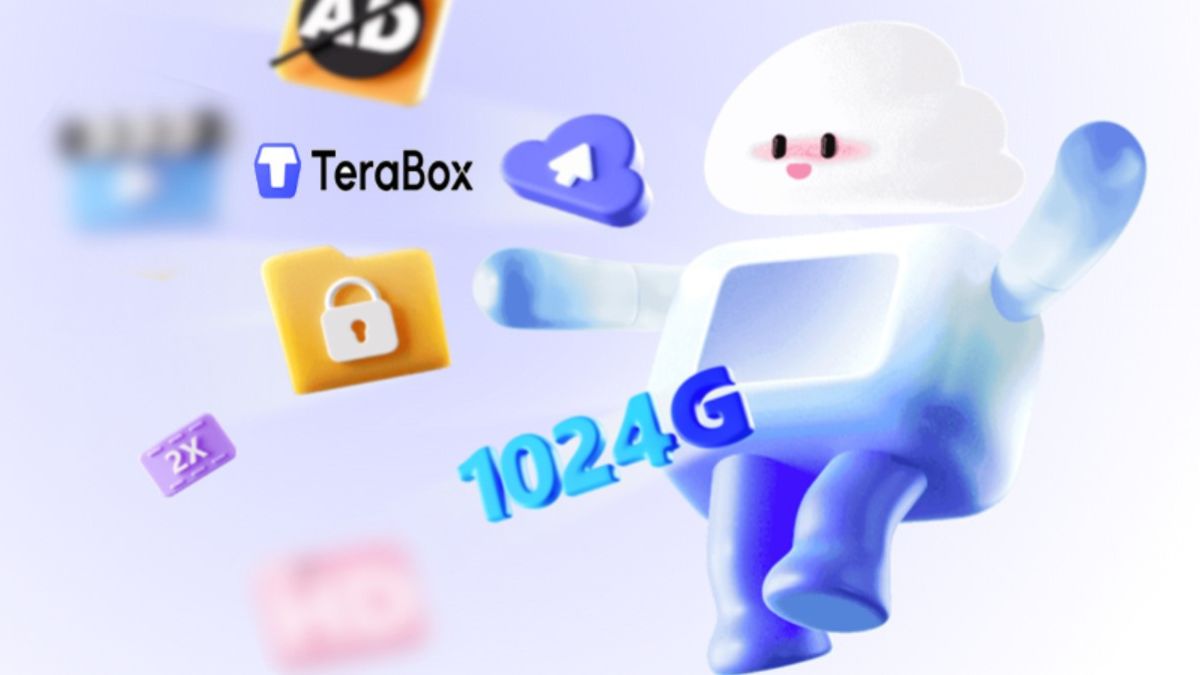
In today’s digital landscape, cloud storage solutions are helping individuals and businesses to store and manage their important documents. Among the different storage providers, TeraBox, powered by Flextech, has taken the industry by storm with high-capacity storage solutions and an easy-to-use interface.
However, many people ask “Where is the TeraBox headquarters located?” From which country is TeraBox operated?
TeraBox is a Japanese cloud storage company operated by Flextec. Its headquarters are located in Tokyo, Japan.
Let’s briefly explain Flextech, the driving force behind TeraBox, its location, functions, and major products and services.
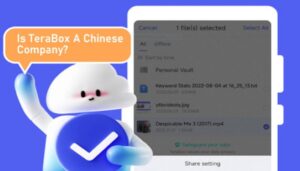
A Brief Overview of TeraBox: One of the Best Cloud Storages
Are you looking for a secure cloud storage solution to store your sensitive information? Look no further. TeraBox, a leading cloud storage solution from a Japanese technology company, Flextech, is here to serve you.
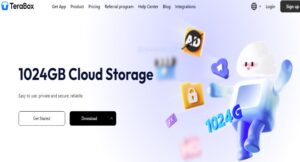
TeraBox is a cloud-based file storage and sharing platform where users can store, sync, and easily access their data. The platform offers a huge 1024 GB of storage space in its free version, which helps individuals and businesses avoid carrying hard drives with them.
This huge storage space is more than enough where users can store photos, videos, documents, PDFs, and other important information for later use.
Integrated with cutting-edge technologies and advanced tools, TeraBox is a safe platform to store your critical information.
Core Features of TeraBox
The following exceptional features make TeraBox a leading cloud storage solution in the industry.
- 1024 GB of Free Storage Space: TeraBox offers 1024 GB (1 TB) of storage space for free, which is more than enough to store, backup, and share large files easily.
- High-Quality Security Protocols: Packed with advanced and cutting-edge security techniques, TeraBox encrypts its user’s data via SSL protocols, client-side endpoint encryption, two-factor authentication, and advanced AI algorithms. The Personal Vault further adds to user privacy and security. That’s why TeraBox is trusted by millions of users worldwide.
- Automatic Cloud Backups: Unlike other cloud storage solutions, TeraBox offers automatic cloud backups for your stored data. When users upload their photos, videos, and documents, it automatically syncs them and creates a secure backup of those files.
- Mult-Device Support: TeraBox supports almost all types of devices. It offers apps for Android, iOS, macOS, Windows, Linux, and Web Interfaces.
- Large File Transfer: TeraTransfer from TeraBox ensures quick transfer of large unlimited files for free. Users after uploading their files to the cloud, can create an anonymous link and share it with anyone they want.
- Fast Uploads and Downloads: Although uploading and downloading speed depends on the quality of your internet connection. But TeraBox is designed to ensure quick file uploads and downloads.
- Seamless Integration with Third-Party Apps: Almost all other cloud storage services don’t allow third-party app integration. On the other hand, TeraBox shows seamless integration with third-party apps to allow users in-app file editing and easy management.
- Collaboration Features: TeraBox allows its users to work unanimously on different projects through its collaboration features. This improves working capacity and quality of work.
- Referral Program: In 2022, TeraBox launched its “Referral Program” through which its users can earn money by inviting other users to join and create TeraBox accounts.
- And much more features: Other core features that TeraBox offers include its affordable storage plans along with 1 TB free storage, recycle bin for deleted files, online decompression, smooth video playback, and easy-to-use interface.
Flextech: The Driving Force Behind TeraBox
Who owns TeraBox? What is the driving force behind TeraBox?
These are commonly asked questions. And the answer is that Flextech owns TeraBox and also manages and operates it.
Flextech is a Japanese tech company that provides a cloud platform for improving user’s privacy and security. This Tech giant offers user-centered services that always cater to the unique storage needs and preferences of its customers.
Flextech’s innovation-driven measures encourage its employees to challenge conventions and make TeraBox a reliable cloud storage platform to pursue excellence. The company introduces new advanced technologies to meet the latest digital storage needs.

The excellence from Flextech has made TeraBox a safe and reliable cloud storage platforms. That’s why, it is loved by more than 400 million users worldwide. TeraBox has crossed 100 million downloads on the Google Play Store with 3M customer reviews and 4.6 ratings.
The innovation, excellence, and continuous struggle from Flextech to provide users with the best user experience shows that it is the main driving force behind TeraBox’s success.
Let’s discuss where is Flextech located and what functions and roles it performs.
Location
Many people ask “Is TeraBox a Chinese company?” Where is TeraBox’s central office?
The parent company of TeraBox, Flextech, is a Japanese company by origin, not a Chinese company. Therefore, TeraBox’s executive office is also located in Japan.
The company’s headquarters are based in Tokyo, a city whose security-friendly environment is suitable for cloud storage firms. Japan is a user’s privacy-friendly country where that demands cloud storage companies to protect every user’s data at all costs.
Every cloud storage provider must adhere to Japanese data laws, including APPI which is made to protect the user’s information.
Flextech always adheres to these laws and ensures top-notch security measures to encrypt critical information. That’s why, it is loved by more than 250 million users worldwide.
Key Functions and Roles
Flextech Inc. is a company that always strives to improve user satisfaction via its high-quality services. It performs the following key functions and roles in improving user experience.
- It leverages advanced security technologies like HTTP, SFTP, SSL protocols, client-side encryption, and other privacy techniques to encrypt its user’s data.
- The company always prioritizes its users and meets their expectations via its user-centered services.
- TeraBox’s parent company keeps its employees up-to-date and encourages them to challenge convention. Its innovation-driven strategies pursue excellence and introduce new cloud storage solutions to cater to the unique storage needs of users.
- The company deals with efficient data management, data security, and backups, and ensures seamless collaboration and easy file-sharing.
- Flextech also strives hard to ensure data recovery in TeraBox and makes it supportive for all platforms.
- In addition, Flextech innovated TeraBox to offer enterprise-level cloud storage solutions to meet the changing digital storage needs.
What Are the Major Products and Services Offered By Flextech?
Flextech, the Japanese tech company headquartered in Tokyo, offers the following top-notch products and services.
TeraBox
TeraBox is one of the best cloud storage solutions that offers 1 TB of free storage space for personal use. Origin from Japan, TeraBox’s base of operations is also controlled there. Its basic functions include automatic backups and easy file-sharing via links.
TeraBox was launched by Flextech in June 2020. Now, it has more than 400 million registered users worldwide.

Core Features:
- 1 TB of storage space for free
- Easy-to-use interface
- Quick upload and download speed
- Automatic backups and file syncs
- High-quality data security
- Cross-platform compatibility
- Easy collaboration features
- Third-party integrations
- And Much More!
TeraScan
As the name suggests, TeraScan is an AI-powered tool that turns your phone into a powerful portable scanner. Users can use it to scan files anytime, anywhere. It allows easy scanning, editing, exporting, and file-sharing. TeraScan is an easy-to-use, quick, and reliable scanning tool out there.
Core Features:
- TeraScan supports file editing that users can adjust with quick modify.
- Its OCR features let you convert images into Text format.
- You can use it to Export scanned files as PDFs or JPGs
- Once the scanning and editing have been done, use its Share feature to share files anytime, anywhere.
TeraGogo
TeraGogo from Flextech is your best companion for navigating the digital world. It is a fast, secure, and feature-packed browsing app that allows you to enjoy the best browsing experience like never before.
With TeraGogo, users can unleash the endless video resources at their fingertips. Its “Smooth Playback” feature lets users enjoy an extraordinary video-streaming experience from multiple video-sharing websites.
Core Features:
- Leads the search engine trends
- Smooth playback for an unmatched video viewing experience
- Hot list for the latest updates on Films and Television resources
- Ability to work as an AI assistant
- Privacy protection for your information
- Vide-streaming without ads
TeraTransfer
Use TeraTransfer from Flextech to transfer and send large unlimited files online for free. As the name suggests, TeraTransfer is a file-sharing tool that allows users to share large files via email and anonymous links.
When sending files online, users can select the validity period and password-protect them to avoid cyberattacks. Thus, select a file, create its link, and share it via email or resource.
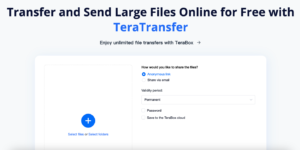
Core Features:
- Unlimited file-sharing
- Secure big transfers with a safe link
- Flexible file-sharing options
- No login required
- Custom expiration time
- Safe, reliable, fast, and easy to use
Summary
TeraBox headquarters are located in Tokyo, Japan, because it is owned by a Japanese company, Flextech Inc.
Flextech is the major driving force behind TeraBox’s success journey that uses cutting-edge techniques and advanced tools to make TeraBox safe and secure for data storage. Innovation and excellence from Flextech’s employees allow TeraBox to automatically back up files and facilitate file-sharing via links.
Flextech’s other services include TeraScan, TeraGogo, and TeraTransfer which further improve user satisfaction.
APP
CapCut for Corporate Training: Simplifying Video Creation with AI Tools
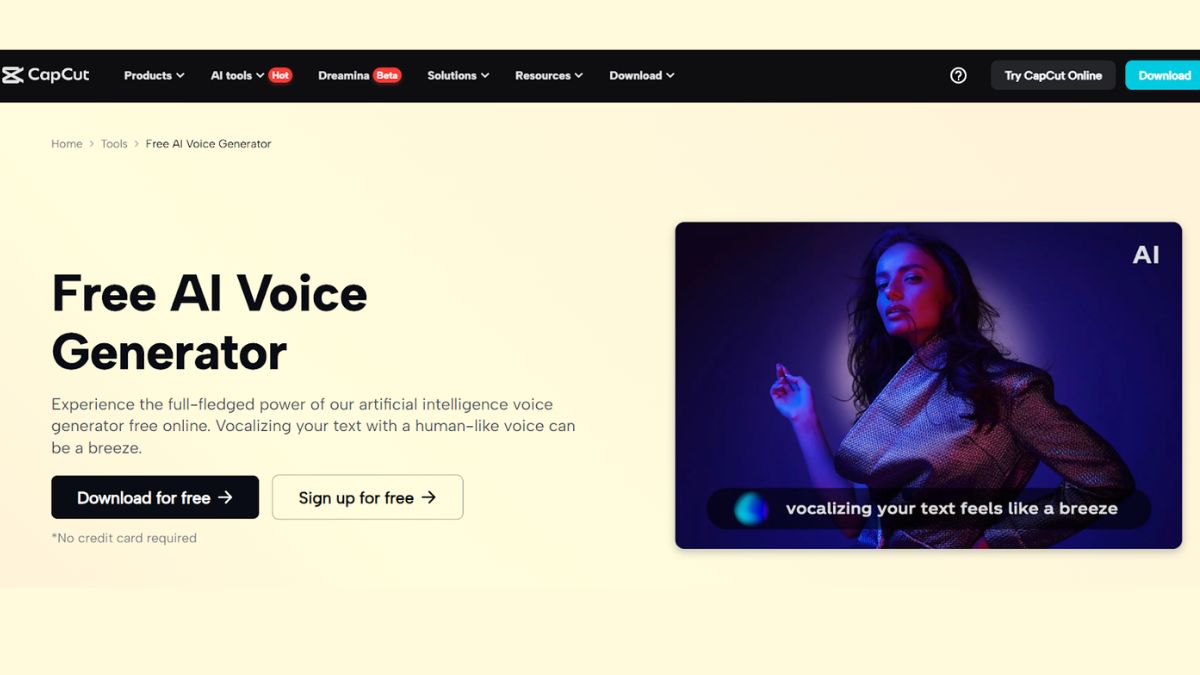
Why CapCut Works for Corporate Training
Key Features That Simplify Corporate Training
Step-by-Step: Create Corporate Training Videos with CapCut
Step 1: Start a New Project and Upload Assets

Step 2: Add a Voiceover with Text-to-Speech

Step 3: Insert Auto Captions

Step 4: Improve Visual Clarity with Enhanced Image

Step 5: Export and Share
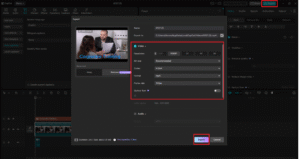
Final Thoughts
APP
Download GBWhatsApp APK Latest Version Updated 2025
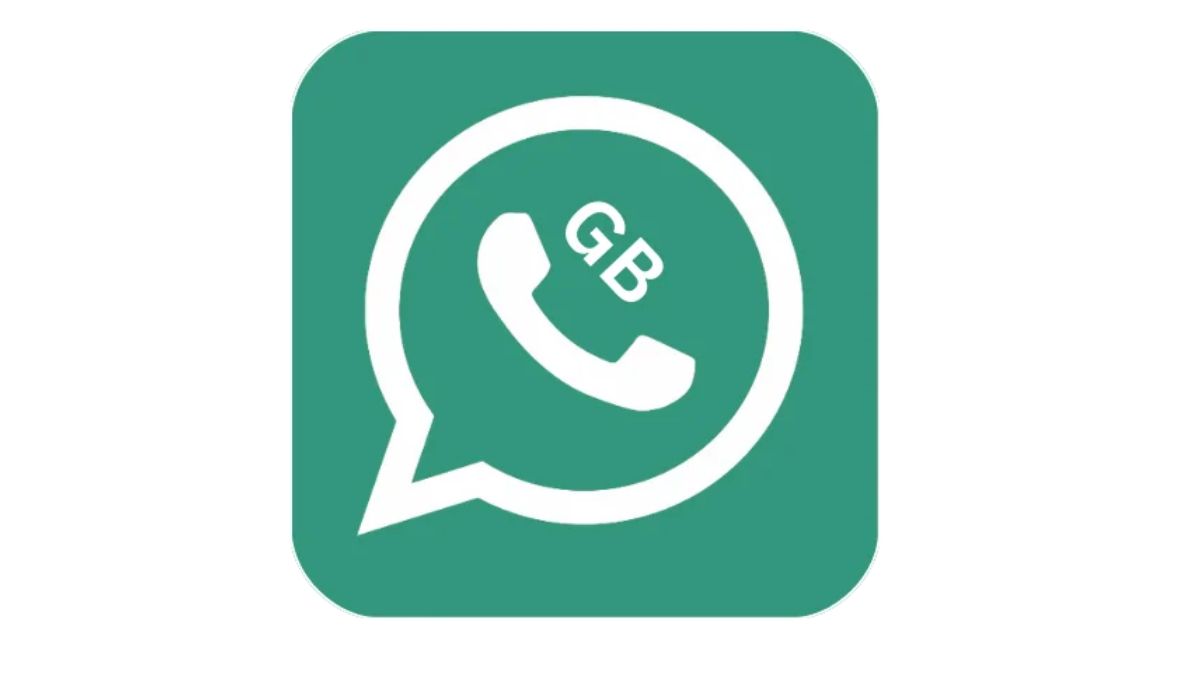
If you’ve ever wished WhatsApp had more privacy settings, extra customization, and better media sharing, GBWhatsApp might be exactly what you need. It works just like the official WhatsApp but comes with added features that make chatting easier and more personal.
This guide walks you through what GBWhatsApp is, what’s new in the 2025 update, and how you can install it safely.
What is GBWhatsApp?
GBWhatsApp is a tweaked version of the regular WhatsApp app. You can still message anyone who uses the official version, but you get more options to control how you use it.
People like GBWhatsApp because it lets them:
- Hide their online status and typing indicator
- Change themes, fonts, and chat colors
- Send bigger videos and high-quality photos
- Use two WhatsApp accounts on one phone
What’s New in the 2025 Version?
The latest update makes GBWhatsApp smoother and safer to use. Here’s what’s been added or improved:
- Better Anti-Ban – Lowers the risk of your account getting banned.
- More Custom Themes – Thousands of free themes to style your chats.
- Faster Performance – Quicker loading and fewer bugs.
- Bigger File Sharing – Send videos up to 700MB and photos in original quality.
- New Emoji Styles – Switch between Android, iOS, and Facebook emojis.
Standout Features
- Hide Online & Typing – Chat without letting others know you’re active.
- DND Mode – Turn off internet just for GBWhatsApp.
- Auto Reply – Set up quick replies when you’re busy.
- View Deleted Messages – Read messages even after someone deletes them.
- Two Accounts – Run two WhatsApp numbers on one device.
- Save Statuses – Download your friends’ photos and videos from their status updates.
- Extra Privacy Settings – Hide blue ticks, second ticks, and microphone icons.
How to Download and Install GBWhatsApp (2025)
Since GBWhatsApp isn’t on the Play Store, you’ll need to get it from a safe APK source.
Step 1: Go to your phone’s Settings > Security and allow Install Unknown Apps for your browser.
Step 2: Download the latest GB WhatsApp APK 2025 from a trusted website.
Step 3: Open the APK file and tap Install.
Step 4: Open the app, verify your number, and set it up just like regular WhatsApp.
Step 5: Restore your chats if you have a backup.
Is It Safe to Use GB WhatsApp?
GBWhatsApp is created by independent developers, not the official WhatsApp team. That means:
- You should only download it from reliable sources.
- There’s always a small chance of temporary bans from WhatsApp.
- Keep it updated to get the latest security fixes.
Tip: Back up your chats before installing or updating, just in case.
Final Thoughts
The GBWhatsApp APK Latest Version (2025) is perfect if you want more control, better privacy, and bigger file sharing than the official WhatsApp offers. As long as you download it from a safe source and keep it updated, it’s a great option for a more personalized messaging experience.
APP
A Proven Guide To Agile Mobile App Development Methodology
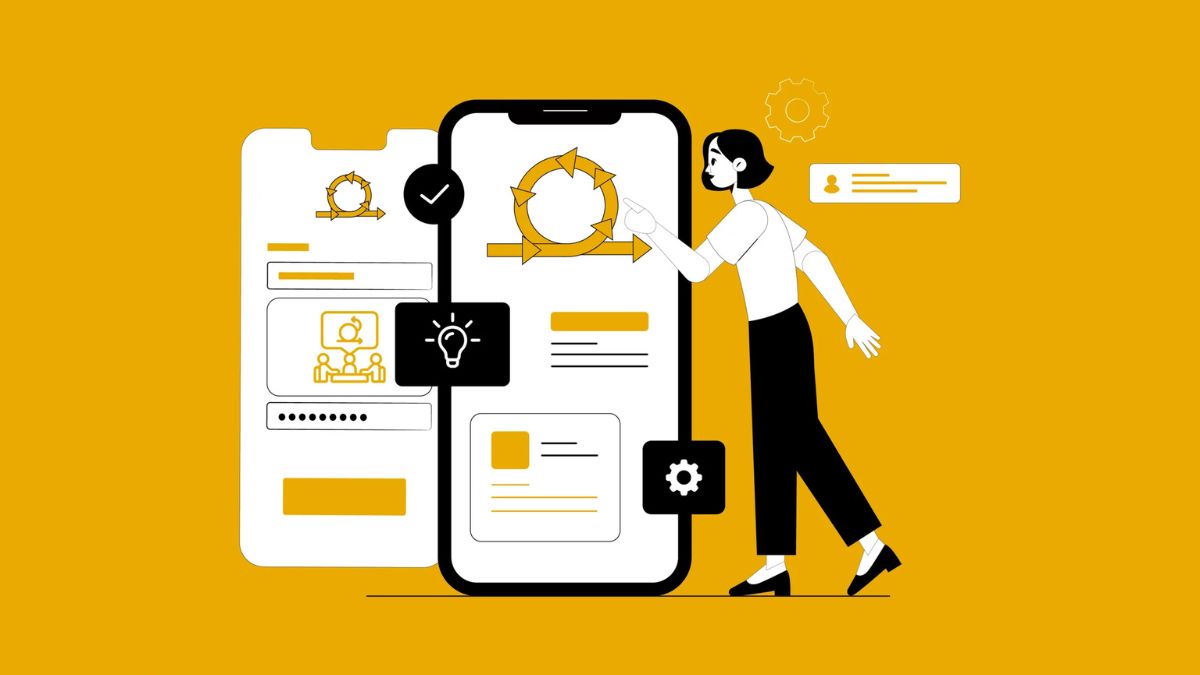
Creating an effective app today involves more than just clean code or an attractive design: it is about real user feedback, quick iteration, and continuous improvement. This pace is impossible to sustain with traditional development models, and that is why Agile has become the gold standard for a mobile app development company to deliver high-functioning applications.
According to a study, 71% of organizations use Agile to boost delivery and quality as it helps release faster, adapt continuously, and align with user needs. That’s the reason every other mobile app development company in New York and other regions of the USA is prioritizing the agile approach to keep their iterations smooth throughout the development process.
Why Agile Means Smarter and Faster Mobile Apps
Agile, in comparison with other development methodologies (such as Waterfall), embraces iteration, teamwork, and ongoing delivery rather than a linear, step-by-step process. In the case of mobile apps, where user expectations are quickly changing and where device ecosystems are different, this approach is transformative.
Agile emphasizes:
- Iterative development: They have short cycles of work (called sprints) during which features are designed, built, tested, and reviewed quickly.
- Customer collaboration: Developers seek the input of users and stakeholders regularly, working together instead of merely delivering at the end.
- Embracing change: Agile embraces evolving requirements even in the later stages of development, perfect for the volatility of mobile.
Choosing the Best Agile Approach for Faster App Delivery
Agile is not a single standard process but a philosophy that can be utilized by numerous frameworks with different strengths, and is only suited to a team and the objective it aims to achieve.
Scrum
Scrum is the most popular Agile framework. It divides work into time-boxed sprints (usually 1–4 weeks). The team holds regular ceremonies like:
- Sprint Planning (to define tasks),
- Daily Standups (to track progress),
- Sprint Reviews (to demo what’s done), and
- Retrospectives (to reflect and improve).
Scrum works especially well for cross-functional teams in a mobile app development company, where designers, developers, QA, and product managers work side by side.
Kanban
Kanban visualizes tasks on a board with columns like “To Do,” “In Progress,” and “Done.” It’s flow-based rather than time-based and ideal for teams that need flexibility rather than rigid sprint cycles. Kanban also emphasizes WIP (Work-in-Progress) limits to prevent overload and maintain productivity.
Extreme Programming (XP)
XP adds engineering discipline to Agile. It focuses on practices like pair programming, test-driven development (TDD), and continuous integration. It’s highly technical and is best suited for mobile projects where quality, speed, and frequent releases are paramount.
Hybrid Models
Many modern teams adopt a hybrid approach using Scrum for planning and velocity tracking while borrowing Kanban for task visibility and XP for technical practices. This flexible structure supports teams working on complex, evolving apps that serve fast-moving industries like fintech, healthcare, or travel.
Agile Workflow in Mobile App Projects
To fully leverage Agile, teams need a structured process tailored to mobile app development:
Product Backlog Creation
Everything starts with a backlog, a prioritized list of features, enhancements, and fixes. These are written as user stories (e.g., “As a user, I want to log in with Face ID”).
Product Owners define these stories based on user needs, business goals, and market research.
Sprint Planning
At the beginning of each sprint, the team selects which backlog items to work on. Each task is estimated in effort using story points or hours. The goal is to deliver shippable features by the sprint’s end.
Development and Continuous Integration
Developers begin coding, designers fine-tune the UX, and QA engineers write tests. With continuous integration (CI), the code is frequently merged, tested, and validated to ensure stability.
Daily Stand-ups
Short daily meetings help align the team. Everyone shares what they did yesterday, what they’ll do today, and any blockers.
Sprint Review & Retrospective
At the sprint’s end, the team demos the completed features to stakeholders, collects feedback, and documents learnings in a retrospective. This feedback feeds directly into the next sprint’s planning.
This cycle keeps development agile, feedback-driven, and user-first, a practice mastered by every elite mobile app development company.
Real-World Benefits of Agile for Mobile Apps
Agile is superior to traditional methods since it accepts flexibility, constant feedback, and quick iteration, important requirements in mobile, where speed is everything. Agile, in contrast to the strict waterfall models, enables teams to adjust to user feedback on the fly and improve through each sprint. This leads to more rapid delivery, more accurate product market fit, and user satisfaction.
Faster Time-to-Market
Under Agile, you have deployable features released in weeks and not in months. This enables companies to test quickly and integrate feedback to develop a competitive advantage.
Reduced Risk of Failure
Early users and constant feedback will spot misaligned features or bad UX before it is too late. You are able to turn around easily, rather than spending time and money on features that people do not want.
Improved Product Quality
Regular testing, CI pipelines, and retrospectives help bugs get fixed at an early stage, and overall code quality increases from sprint to sprint.
Enhanced Collaboration
Agile encourages a cross-functional group and client transparency. An Agile-oriented development company in New York (and other parts of the USA), where clients are frequently involved in demos and decision-making, results in better transparency and alignment.
Customer Satisfaction
Agile prioritizes working software and responsiveness, so users always get value, be it faster loading, better UX, or a new feature that they specifically asked to be implemented.
Common Pitfalls in Agile Mobile Projects and How to Fix Them
While Agile offers immense benefits, many teams stumble due to poor execution. Here are common mistakes and how to avoid them:
Incomplete Requirements in Backlogs
Without clear user stories and acceptance criteria, sprints can derail. Ensure each story is well-defined, prioritized, and refined before planning.
Ignoring UX in Sprints
Design isn’t separate from development. Integrate UI/UX work into the sprint cycle—don’t treat it as a pre-sprint task.
Lack of Stakeholder Involvement
If clients or product owners are missing from reviews or sprint planning, the product can drift from expectations. Keep stakeholders actively engaged at all times.
Overcommitting Work
Avoid sprint burnout by realistically estimating capacity. Use velocity trends to forecast what’s truly achievable within each sprint.
Poor Retrospectives
Skipping retros means repeating the same mistakes. Employ retrospectives to identify deficiencies in the process, team sore spots, and ideas to make things better.
Once these flaws are identified and handled at the right stage, a mobile app development company will establish a smooth delivery pipeline in Agile that can scale proportionately.
Final Thoughts!
Agile is not only a methodology, it is a paradigm change that shifts the focus of development of mobile apps to users, team efforts, and a flexible design. It will not only help the industry to deliver apps quickly, but also end up being more in line with the needs of the real world of users.
Therefore, the adoption of Agile proves to be an effective way through which any team intending on creating successful apps can achieve innovation, quality, and sustainability through its ideas and processes.
-

 TECHNOLOGY5 months ago
TECHNOLOGY5 months agoTop 10 Must-Read Stories from Kristen Archives You Can’t Miss
-

 TECHNOLOGY11 months ago
TECHNOLOGY11 months agoSky Bri Net Worth Revealed: How She Built Her Financial Empire
-

 TOPIC1 year ago
TOPIC1 year agoBasement Renovation Contractors: How They Tackle Structural Issues During Renovations
-

 TOPIC8 months ago
TOPIC8 months ago5 Reasons the //Vital-Mag.Net Blog Dominates Lifestyle
-

 TOPIC6 months ago
TOPIC6 months agoTop 10 Articles from the ://Vital-Mag.net Blog That You Can’t Miss
-

 CRYPTO9 months ago
CRYPTO9 months agoCrypto30x.com Review: Is It the Right Platform for You?
-

 BUSINESS5 months ago
BUSINESS5 months agoTraceLoans Explained What You Need to Know
-

 ENTERTAINMENT3 months ago
ENTERTAINMENT3 months agoNHentai.NEF: Navigating the Popular Hentai Archive with Ease
